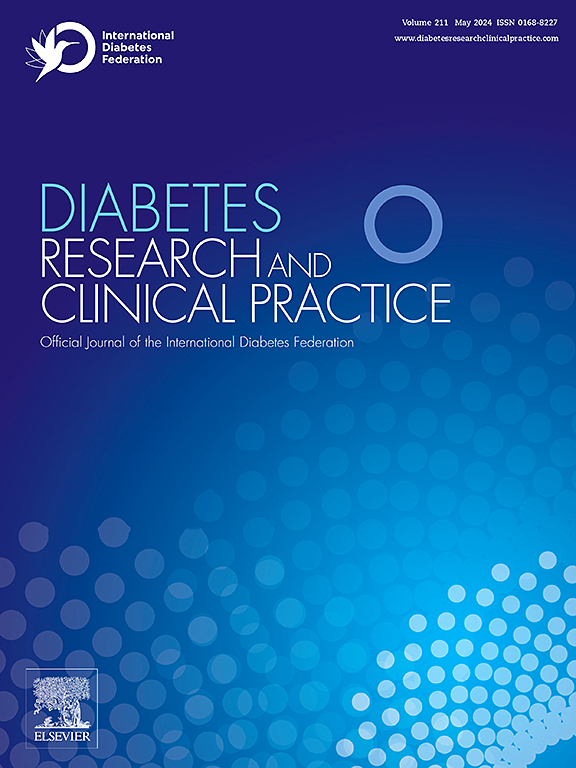Diabetic retinopathy and chronic kidney disease synergistically increase the risk of incident cardiovascular disease in type 2 diabetes: Insights from two cohort studies
IF 6.1
3区 医学
Q1 ENDOCRINOLOGY & METABOLISM
引用次数: 0
Abstract
Aims
Chronic kidney disease (CKD) is a well-established cardiovascular risk factor for type 2 diabetes (T2D); however, the role of diabetic retinopathy (DR) remains unclear. This study evaluated the individual and combined effects of DR and CKD on cardiovascular disease (CVD) in T2D.
Methods
We analyzed individuals with T2D and no prior CVD from the Korean NHIS cohort (n = 2,064,406) and the UK Biobank (n = 21,350). The primary outcome was a composite of cardiovascular death, nonfatal myocardial infarction, and nonfatal stroke.
Results
In the Korean cohort, adjusted hazard ratios (aHRs) for the primary outcome were elevated in those with PDR (aHR 1.37), CKD (aHR 1.36), and even more so when both were present (aHR 2.21), compared to individuals without DR or CKD. Similar results were observed in the UK Biobank. The effect of PDR on CVD was strongest in younger individuals, with aHRs of 3.28 (<40 years), 1.77 (40–64 years), and 1.29 (≥65 years) (Reference: No DR in each age group).
Conclusions
PDR and CKD, both independently and in combination, increase cardiovascular risk in individuals with T2D, particularly among younger age groups. These findings support incorporating PDR into cardiovascular risk assessment and management.

糖尿病视网膜病变和慢性肾脏疾病协同增加2型糖尿病心血管疾病发生的风险:来自两项队列研究的见解
慢性肾病(CKD)是公认的2型糖尿病(T2D)的心血管危险因素;然而,糖尿病视网膜病变(DR)的作用仍不清楚。本研究评估了DR和CKD对T2D患者心血管疾病(CVD)的单独和联合影响。方法:我们分析了来自韩国NHIS队列(n = 2064406)和英国生物银行(n = 21350)的t2dm和无CVD患者。主要结局是心血管死亡、非致死性心肌梗死和非致死性卒中的综合结果。结果:在韩国队列中,与没有DR或CKD的个体相比,PDR (aHR 1.37)和CKD (aHR 1.36)患者的主要结局的调整风险比(aHR)升高,当两者同时存在时(aHR 2.21)甚至更高。在英国生物银行也观察到类似的结果。PDR对CVD的影响在年轻人中最强,ahr分别为3.28(40岁)、1.77(40 - 64岁)和1.29(≥65岁)(参考:各年龄组均无DR)。结论spdr和CKD,无论是单独还是联合,都会增加T2D患者的心血管风险,尤其是在年轻人群中。这些发现支持将PDR纳入心血管风险评估和管理。
本文章由计算机程序翻译,如有差异,请以英文原文为准。
求助全文
约1分钟内获得全文
求助全文
来源期刊

Diabetes research and clinical practice
医学-内分泌学与代谢
CiteScore
10.30
自引率
3.90%
发文量
862
审稿时长
32 days
期刊介绍:
Diabetes Research and Clinical Practice is an international journal for health-care providers and clinically oriented researchers that publishes high-quality original research articles and expert reviews in diabetes and related areas. The role of the journal is to provide a venue for dissemination of knowledge and discussion of topics related to diabetes clinical research and patient care. Topics of focus include translational science, genetics, immunology, nutrition, psychosocial research, epidemiology, prevention, socio-economic research, complications, new treatments, technologies and therapy.
 求助内容:
求助内容: 应助结果提醒方式:
应助结果提醒方式:


